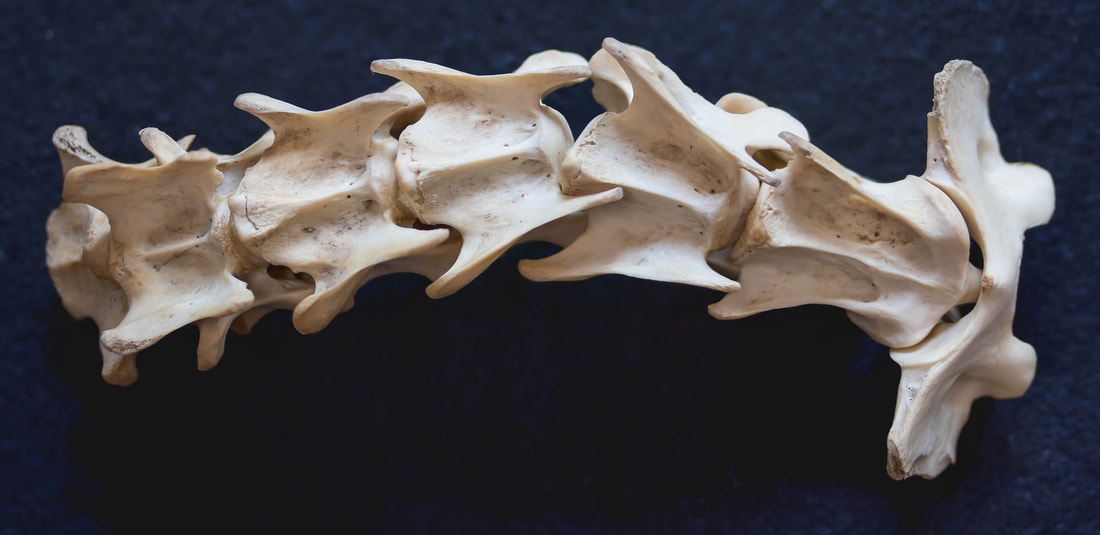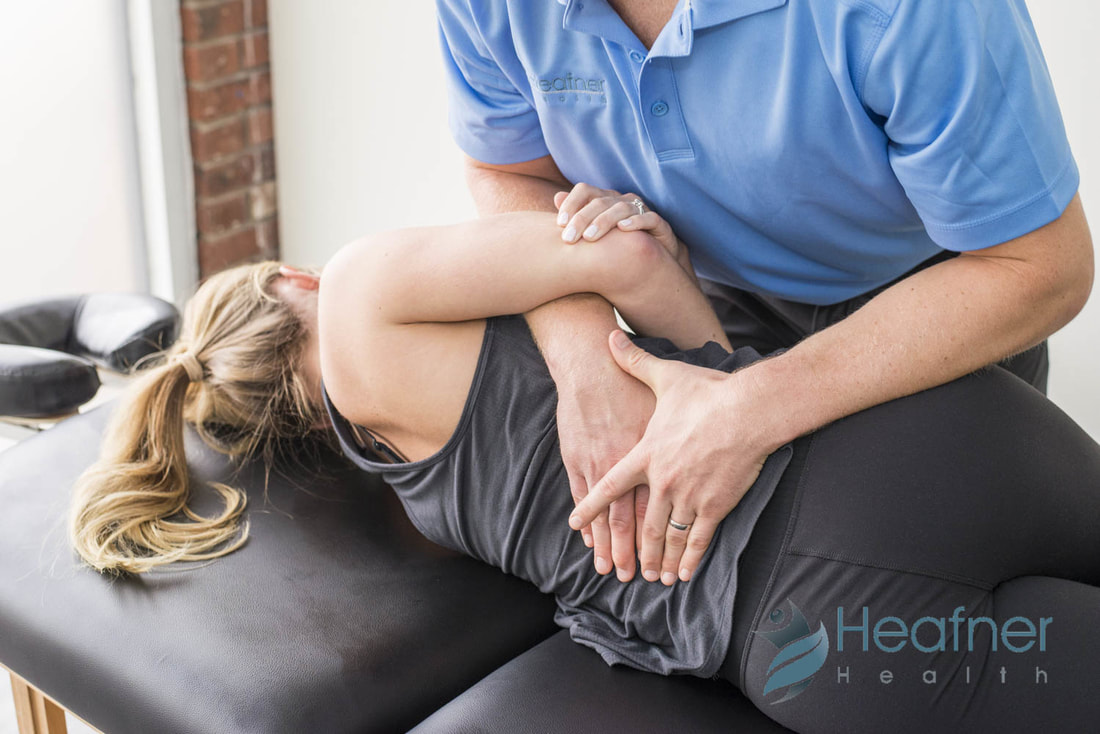OverviewThis article will cover central spinal stenosis (not lateral (foraminal) stenosis.
What is It?The spine or bodies backbone consists of 31 separate vertebrae. The spinal cord is a bundle of nerves that travel down the entire spinal column. Spinal stenosis occurs when there is narrowing of the spinal canal, limiting movement of the nerves. Spinal stenosis can occur for multiple reasons, but is primarily due to age related changes, such as arthritis. For this reason, spinal stenosis is more commonly seen in individuals over 50 years of age. Other less common causes of stenosis include spinal fracture, tumors, or other trauma to the spine. Symptoms of Spinal Stenosis Since a major cause of spinal stenosis is osteoarthritis, symptoms typically develop gradually over time. Early on, individuals will complain of back pain, stiffness in the legs and thighs, and periodic numbness or tingling. Additionally a loss of sensation may be noted in the thighs or feet. As symptoms progress, gradual weakness or ataxia (incoordination) may be noted while walking. Typically, individuals with spinal stenosis feel better when leaning forward while performing activities. Bending forward creates more space in the spinal canal and decreases pressure on the nerves. As spinal stenosis progresses, the severity of symptoms typically progress as well. For this reason, it is beneficial to seek medical care when you start noticing symptoms. Treatment of Spinal StenosisWhile treatment is varied across the country, most individuals with lumbar stenosis should receive conservative management (physical therapy, NSAIDS, injections) prior to more serious medical interventions. A 2015 study by Dr. Delitto and colleagues found that surgery compared to nonsurgical treatment of lumbar spinal stenosis yielded similar long-term results. This profound study has shown that surgery is not necessary (or at least not needed as commonly) if you are suffering from lumbar stenosis. At Heafner Health, I was recently working with someone diagnosed with moderate central spinal stenosis. During the initial evaluation, the client said, "normally I do not pay out of pocket, but this is my last option before surgery. I have had pain for 6 years without any relief from stem cell or steroid injections." This individual had pain every morning while getting out of bed. His symptoms would naturally lessen throughout the morning, but any prolonged sitting or walking increased his leg symptoms and affected his ability to work. Each evening his sense of stiffness returned, forcing him to take a muscle relaxer and CBD cream. Our sessions focused on a mobility approach, meaning we focused on the mobility of his spine and hips more than anything else. Within 6 sessions, he is no longer having leg pain during the day, and his morning stiffness decreases in minutes! While it is nice to show off our successes, more importantly it speaks to the point that surgery is not necessary. The proper interventions on a motivated patient will work! While this approach will be different from individual to individual, a good physical therapy routine should consist of trunk strengthening exercises, decreasing pain and nerve symptoms, maximizing endurance, and lower extremity flexibility exercises. For a full review of lumbar spinal stenosis, I highly recommend reading the American Physical Therapy Associations article on Physical Therapists Guide to Lumbar Spinal Stenosis. -Dr. Jim Heafner PT, DPT, OCS Owner at Heafner Health Physical Therapy References:
Delitto A, Piva SR, Moore CG, et al. Surgery versus nonsurgical treatment of lumbar spinal stenosis: a randomized trial. Ann Intern Med. 2015;162(7):465-473
5 Comments
Manuel Franco
8/29/2023 10:15:46 pm
I just want to say Thank You to everyone who supported me through the years. My name is Manuel Franco, New Berlin, Wisconsin. My story of how I won the Powerball lottery of $768.4M is a bit of a tale. I have been playing Powerball tickets for 6 years now since I turned 18. I bought my first ticket on my 18 birthday. I was feeling very lucky that day because I had contacted Dr. Odunga Michael to help me with the winning Powerball numbers. I really had that great great feeling that I looked at the camera wanting to wink at it. I only did a tiny part of it and trusted him. He gave me the numbers after I played a couple other tickets along with it for $10. I checked my ticket after the winnings came online and saw the numbers were correct including the Power play. I screamed for about 10 minutes because it felt like a dream. I had won $768.4M. You can check my winning testimony with the lottery officials just with my name search. Thank you Dr Odunga. Well, his email is [email protected] and you can also call or Whats-app him at +2348167159012 so you guys can contact him
Reply
obodubu monday
7/17/2024 09:15:44 pm
Dr. Obodubu Monday is recognised all over the world of marine kingdom, As one of the top fortunate and most powerful spell casters doctor of charms casts from the beginning of his ancestors ship until now Dr. Obodubu Monday lives strong among all other spell casters, there have never been any form of impossibility beyond the control of Dr. Obodubu Monday it doesn’t matter the distance of the person with the problems or situation, all you have to do is believe in the spell casting Dr. Obodubu Monday cast that works, he always warns never to get his charms cast if you do not believe or unable to follow his instruction. it is the assignment of the native doctor Dr. Obodubu Monday to offer services to those in need of spiritual assistance not minding the gravity of your situations or distance as long as water, sea, ocean, lake, river, sand, etc. are near you, then your problems of life would be controlled under your foot. if you need any spiritual help on any of these WhatsApp Doctor Obodubu on : +234 705 993 7909
Reply
QUEEN
7/18/2024 02:04:33 am
Hi guys, i don’t have much to say now now, Than to say thanks to Dr. Monday for rescuing me and my family from poverty, and for getting my husband and my Job back, i love playing lottery , but winning is my biggest problem, Ill never forget the day i come in contact with Dr Monday, whose lottery spell make me a winner, some million Dollars , after giving me a sure winning numbers within 3 days to play,my financial status is settled for good,now i have started to live my dream life after 12 years of playing the lottery A big thanks to Dr Monday, am grateful for all you have done for me and family, he can be reach on Via WhatsApp +234 705 993 7909
Reply
Leave a Reply. |
Heafner HealthPhysical Therapy Archives
April 2024
Categories |



 RSS Feed
RSS Feed
